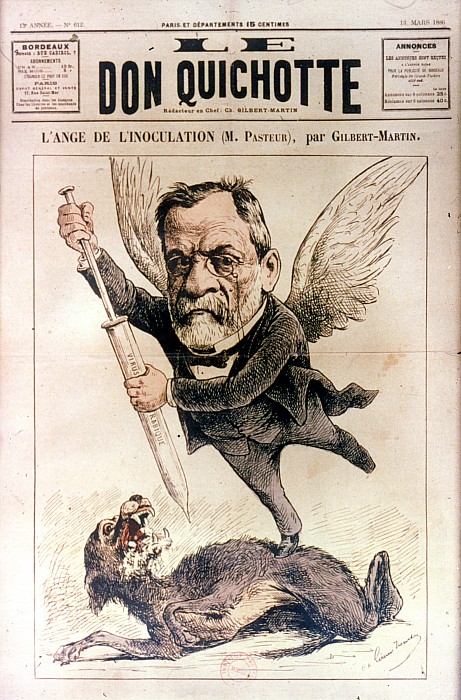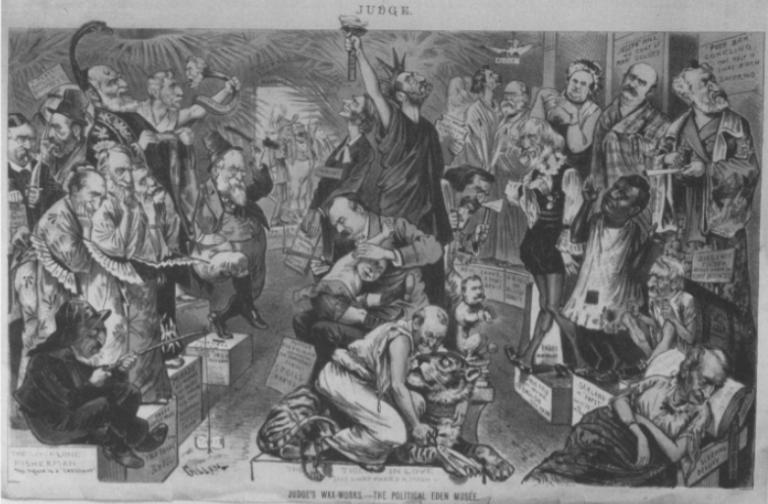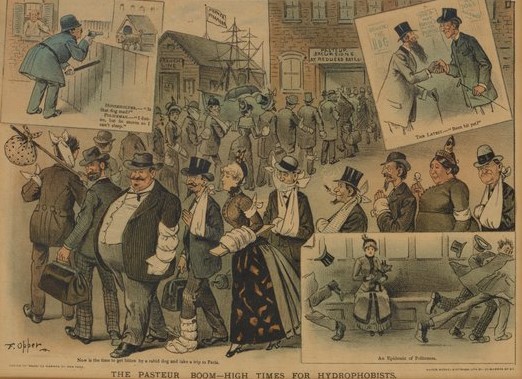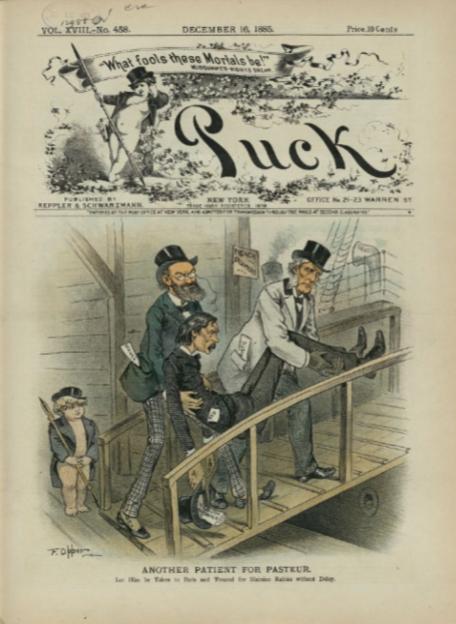Newspapers —which saw a rise in readership in the mid-1800s—published political cartoons that communicated to society that Pasteur’s vaccines were effective in defending disease. Nevertheless, some remained skeptical of the effectiveness of his vaccines.
Bert Hansen: How the Public Became Interested in Medical Science, 2017, Science History Institute
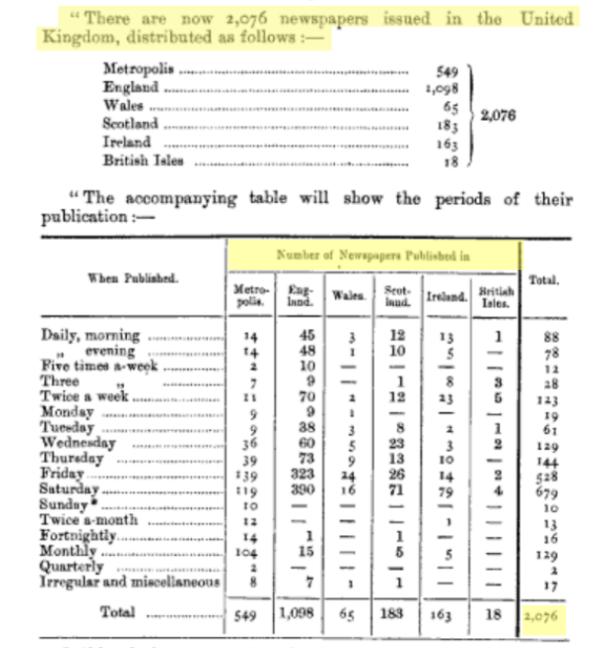
Wiley, Statistics of the Newspaper and Periodical Press, 1881, Journal of the Statistical Society of London
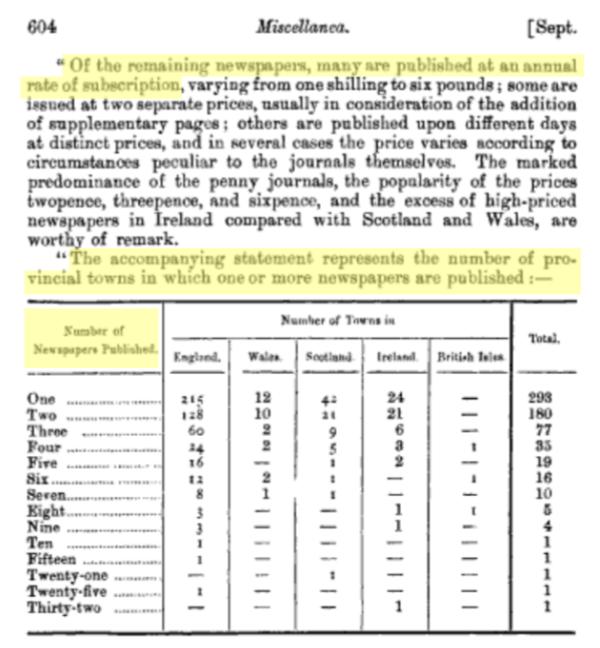
Wiley, Statistics of the Newspaper and Periodical Press, 1881, Journal of the Statistical Society of London
" But the most momentous alteration in the position of the newspaper press has been wrought by the increase in the number of readers. Since 1848 every country in the civilized world has been devoting itself to the work of popular education, with the result of increasing tenfold the number of persons knowing how to read and write and cipher, but knowing very little more. Contemporaneously with this has been the improvement in the means of travel and of transmitting intelligence, thus literally making news-gathering a new and important calling. "
~ E.L. Godkin
Positive Depictions
Pasteur was often portrayed as a heroic figure.
Negative Depictions
Political cartoons ridiculed individuals who journeyed to France to receive Pasteur's rabies vaccine.
.
